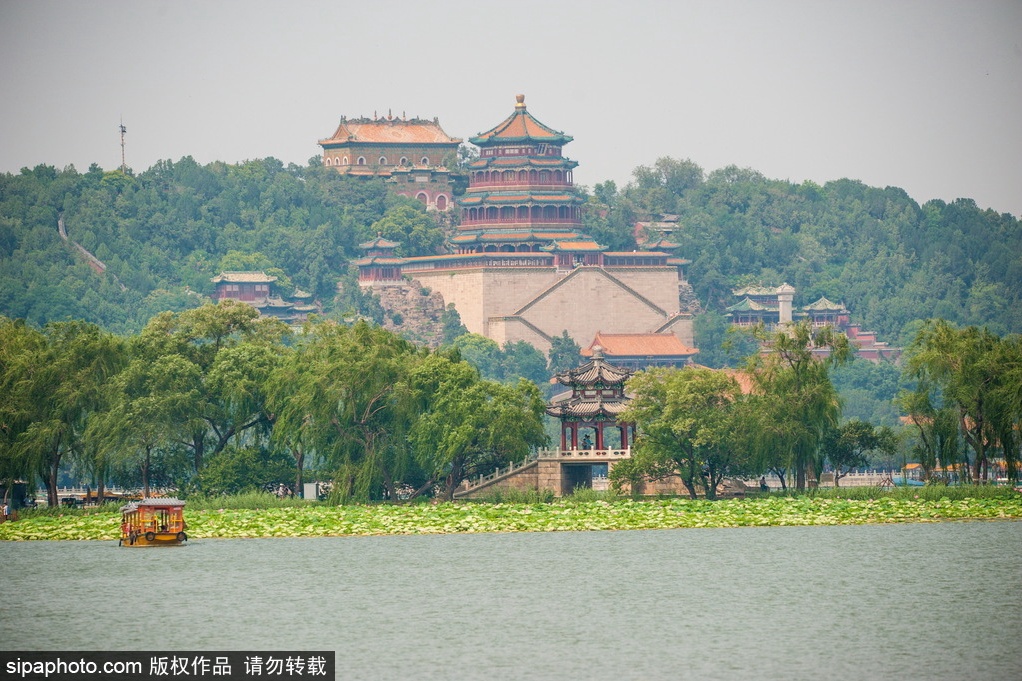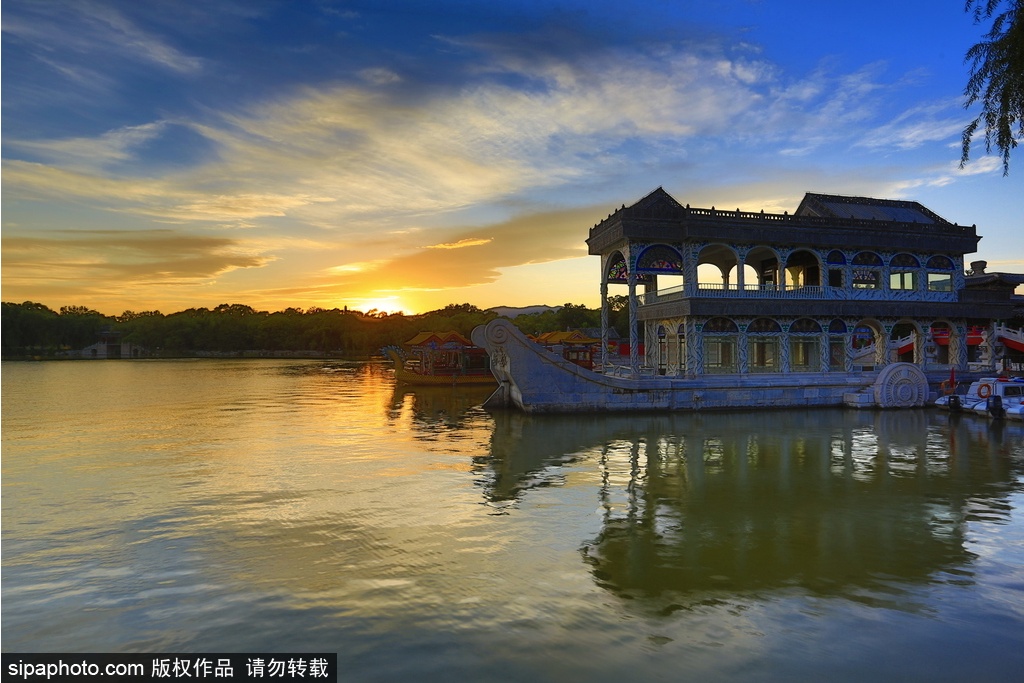Longevity Hill
Longevity Hill was called as the Wengshan Mountain during the Yuan Dynasty. In the legend, an old man discovered a stone full of treasures on this mountain; therefore, the mountain was known as Wengshan Mountain. The mountain was renamed as Longevity Hill during the Qianlong Period, because temples were constructed then aiming at celebrating the birthday of the empress dowager. Unfortunately, the buildings repaired during the Qianlong Period were burnt and destroyed by Anglo-French Allied Force, and most of the existing ones were reconstructed during the Guangxu Period. The Kunming Lake before the mountain is a semi-artificial and semi-natural lake, with almost a history of 3500 years. The Summer Palace was constructed by taking Kunming Lake and Longevity Hill as basis and West Lake in Hangzhou as the template.

Longevity Hill is about 60 metres (200 feet) high and has many buildings positioned in sequence. The front hill is rich with splendid halls and pavilions, while the back hill, in sharp contrast, is quiet with natural beauty. The central Kunming Lake, covering 2.2 square kilometres (540 acres), was entirely man-made and the excavated soil was used to build Longevity Hill.
Address: No. 19, Xinjian’gongmen Road, Haidian District

The Summer Palace
The Summer Palace is a vast ensemble of lakes, gardens and palaces in Beijing. Mainly dominated by Longevity Hill and Kunming Lake, it covers an expanse of 2.9 square kilometers, three-quarters of which is water. In December 1998, UNESCO included the Summer Palace on its World Heritage List. It declared the Summer Palace "a masterpiece of Chinese landscape garden design. The natural landscape of hills and open water is combined with artificial features such as pavilions, halls, palaces, temples and bridges to form a harmonious ensemble of outstanding aesthetic value".
Located in the northwest outskirts of Beijing, 15 km from the city, the Summer Palace is originally named "Qingyiyuan" (Gardens of Clear Ripples). Based on the scenery of West Lake as the chief source, the garden absorbs the design method as well as the artistic conception of traditional southern Chinese garden. It gets the reputation of the “museum of the royal garden”.
As the largest royal garden of the Qing Dynasty, it features wonderful scenery in four seasons. The palace gets more mild and colorful in autumn, the hue of which turns into warm colors like yellow, orange and red. Palaces sheltered in the warm color plants are especially charming. Also, some fallen leaves are floating over the water.



